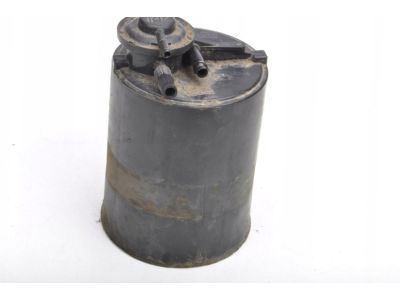
My Garage
My Account
Cart
Genuine Pontiac Fiero Vapor Canister
Fuel Vapor Canister- Select Vehicle by Model
- Select Vehicle by VIN
Select Vehicle by Model
orMake
Model
Year
Select Vehicle by VIN
For the most accurate results, select vehicle by your VIN (Vehicle Identification Number).
1 Vapor Canister found
Pontiac Fiero Vapor Canister
The Vapor Canister located on vehicles that have Pontiac Fiero is an important part of the evaporative emissions control (EVAP) supposed to minimize hydrocarbon emissions in the environment. This is a component that is sometimes called the carbon, or charcoal canister that stores the fuel vapors from the fuel tank. During the operation of the engine there is a purge valve which supplies a fresh air and the vapours accumulated in the canister to the engine where they are burnt. Throughout the years, the different models of the Pontiac Fiero have used different styles of Vapor Canister which include some that have a replaceable filter with the filter intended to increase the efficiency of Vapor Canister. Current implementations are further supplemented by auxiliary diagnostic subsystems, including a canister vent solenoid as well as a fuel tank pressure sensor, that improve the system's leak-detection capabilities.
Each OEM Pontiac Fiero Vapor Canister we offer is competitively priced and comes with the assurance of the manufacturer's warranty for the part. Furthermore, we guarantee the speedy delivery of your orders right to your doorstep. Our hassle-free return policy is also in place for your peace of mind.
Pontiac Fiero Vapor Canister Parts Questions & Experts Answers
- Q: How to inspect and maintain the purge valve, Vapor Canister, and hoses on Pontiac Fiero?A:The system takes fuel vapors in form of gases that are produced by evaporations of fuel in the fuel tank, throttle body and intake-manifold and stores it in canister made of charcoal together with the hoses that connects the canister to the above mentioned parts. The evaporative emissions are stored in the storage canister when the vehicle is motionless or non-operating while during vehicle operation, the intake air flow draws the vapours from the canister to burn in the engine. Problem like poor idle, stalling, and driveability may come from a faulty purge valve or a bad canister or damaged hoses. Fuel spills or smells are often a sign of liquid fuel leakage from several parts, a faulty canister or issues to do with the hoses and air cleaner seating. All hoses must be checked for twists and rupture, the canister must be for crackages or damages, leaks in the parts require replacement. The bottom of the canister should also be checked to see whether the filter is dirty or damaged and if it is, should be replaced by another one. A short hose can be connected to the PCV tube of the purge valve assembly to check airflow while the check valve can be tested with a hand vacuum pump; if vacuum is not held by the diaphragm, the canister should be replaced. Therefore, if the vacuum is held by the diaphragm, then the rate of airflow in the PCV tube should enhance in case it does not, then recommend for a replacement of the canister.




